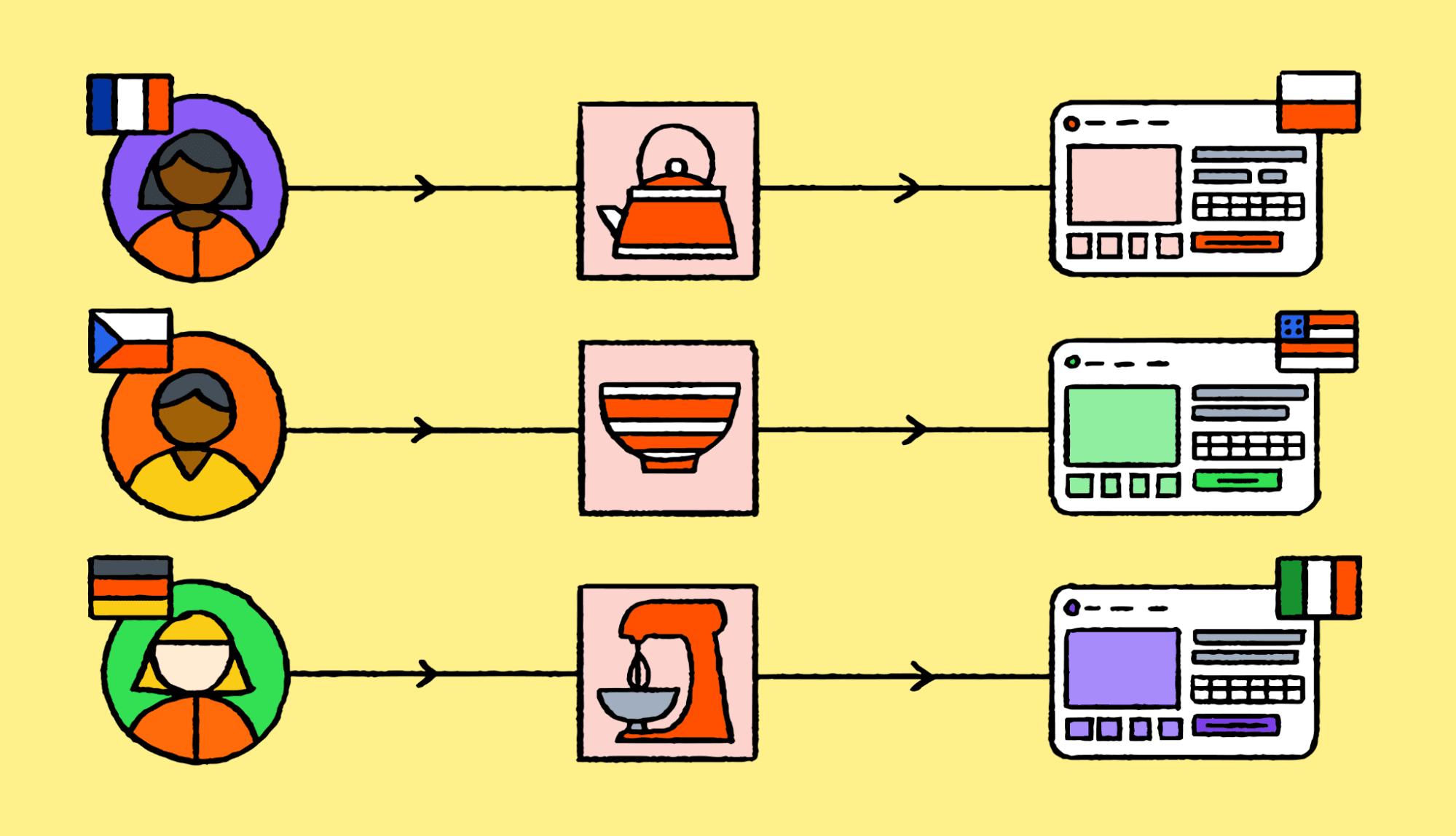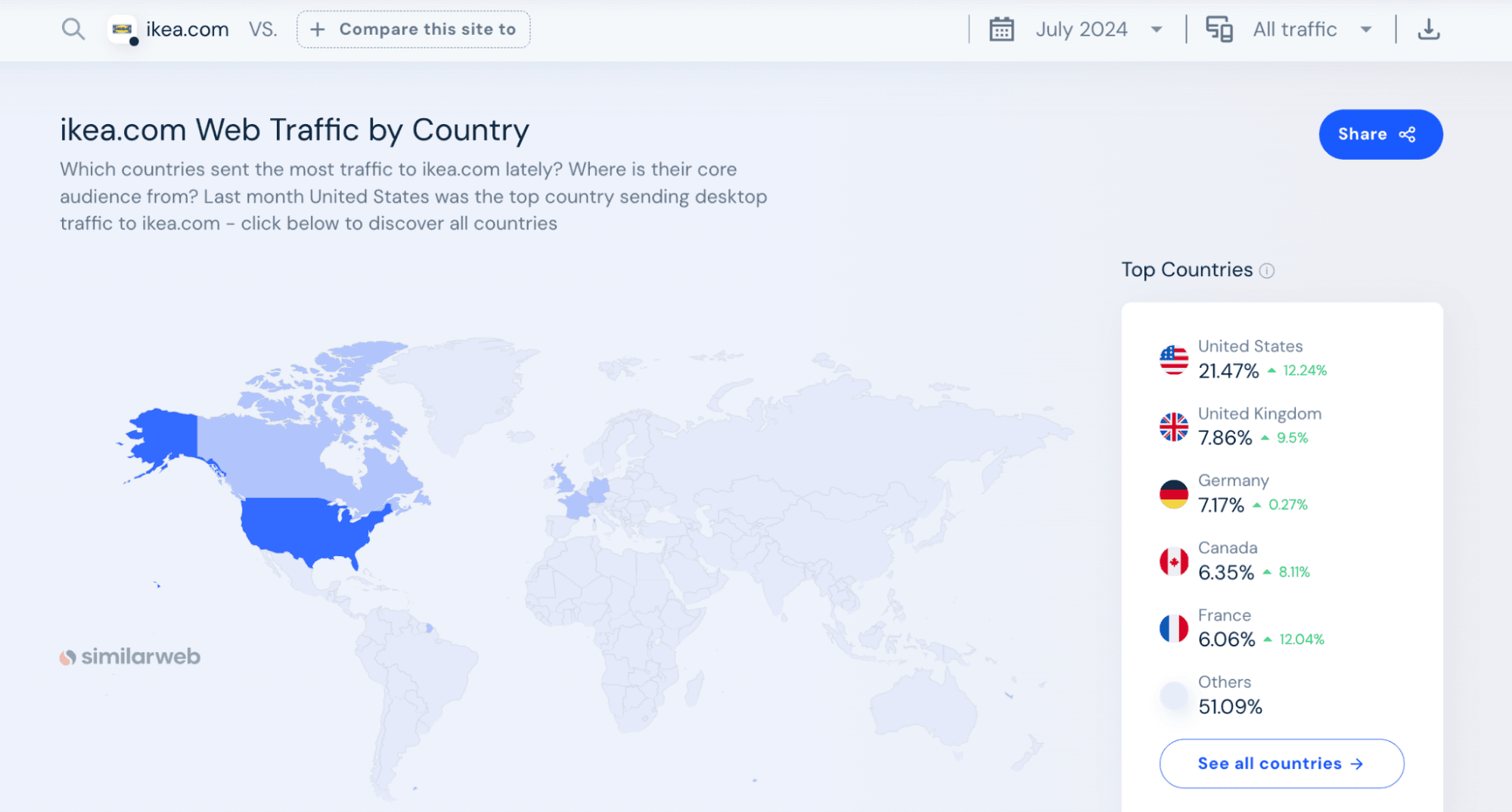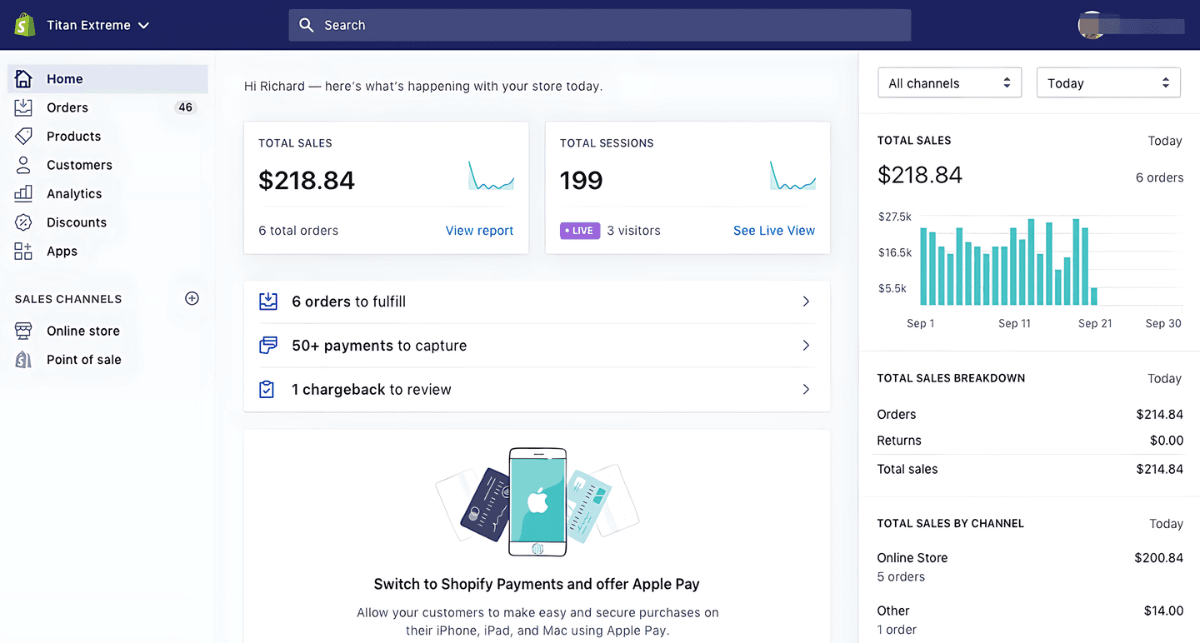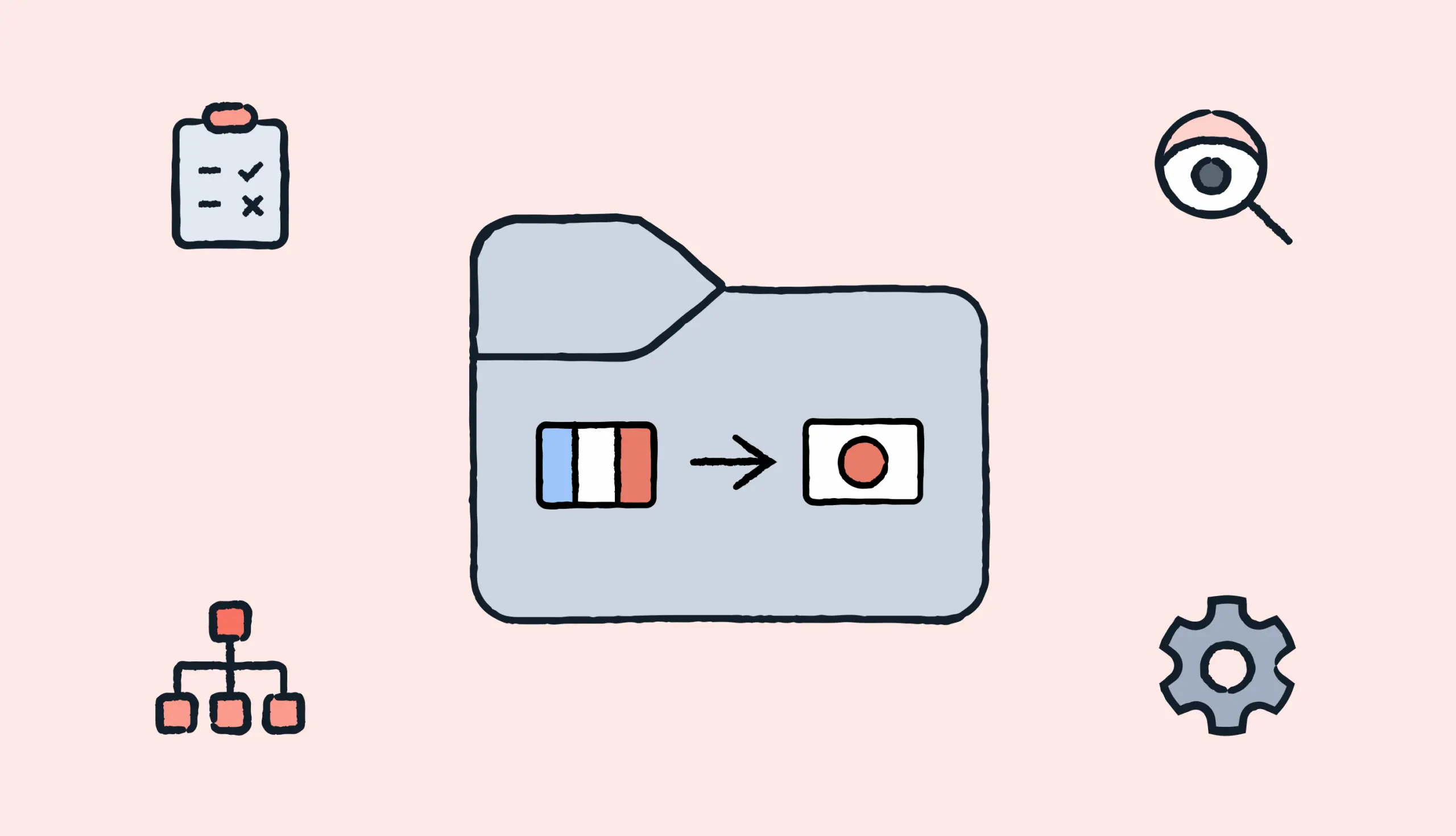3. Adapt your cross-border ecommerce for local audiences
With new technologies and cross-border ecommerce solutions, expanding to international markets is a lot easier. This includes adapting your website for local audiences. But what exactly do we mean by ‘adapting your store’?
You need to make sure your website is available in target languages and adjusted to different cultures and consumer preferences. This is what’s known as localization.
Ecommerce website translation and localization matters. If you still think it’s sufficient to have your ecommerce in English, think again. Up to 75% of online shoppers won’t even bother with a site that’s not in their language. Are you really willing to cut this market share off so easily? We didn’t think so.
There are three main things you need to take into account:
- Content translation and localization
- Payment localization
- Localizing the entire experience
Content translation localization
Translation and localization are related, but they are not quite the same.
Content localization refers to both the cultural adaptation of your brand and products, and translating your website. Additionally, you would need to adapt your ecommerce website to each market. This might include everything from selecting the products that you’re going to sell and adjusting marketing materials.
Localizing your product information is a necessity to ensure that your customers can discover and buy your merchandise.
Silvi Nuñez, Managing Director at Optimational, pointed out that many companies make the mistake of focusing solely on language translation rather than localization. They often overlook the fact that people in different countries, even those who speak the same language, search and shop differently:
“For example, a UK customer searching for “jumper” is looking for a sweater, while a US customer using the same word is likely searching for a baby’s onesie or blouse. Ignoring these regional differences can result in missed opportunities and a poor customer experience.”
You might also need to adapt your photography and website design to ensure diversity, representation, and accessibility. Different customers have different browsing habits, and you want to make sure that you can accommodate them.
Payment localization
Luckily for cross-border ecommerce businesses, most payment solutions have built-in fraud protection. That’s one headache less to worry about. You still need to think about preferred payment methods and pricing transparency.
Consumers in different countries favor different payment methods. For example, credit cards might be popular in the US. Digital wallets like WeChat Pay are preferred in China, and cash on delivery is common in some parts of Southeast Asia. You can also partner with local payment gateways to provide additional options.
Pricing transparency is another piece of the puzzle. You need to be well aware of the local financial regulations and tax implications to make sure you’re showing the correct price of the product. Make sure you:
- Integrate duties and VAT calculations at the checkout
- Display your prices in local currencies
There’s nothing worse than a customer getting their package only to realize they have to pay additional money to cover for custom fees or taxes. Be transparent and set the right expectations.






